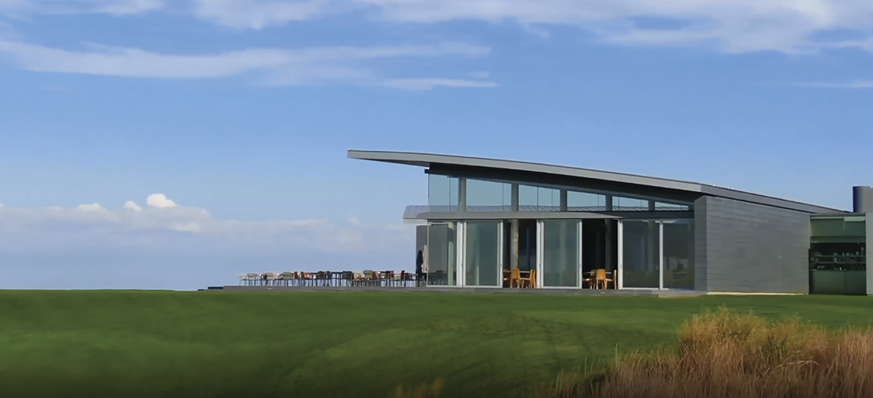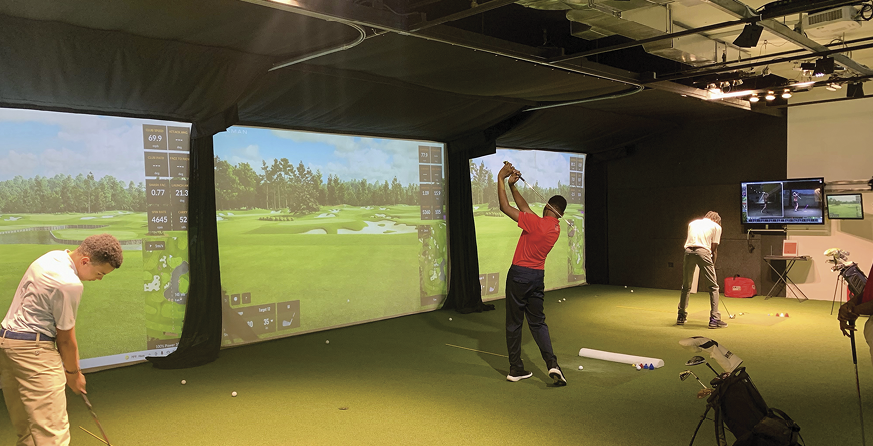- Home
- Media Kit
- MediaJet
- Current Issue
- Past Issues
- Ad Specs-Submission
- Ad Print Settings
- Reprints (PDF)
- Photo Specifications (PDF)
- Contact Us
![]()
ONLINE
![]()
ONLINE

Closing Gaps and Opening Doors
Editors’ Note
Starting out as a newspaper reporter in suburban New Jersey for the now defunct Red Bank Register, Robert Rubin quickly found his way to Wall Street, trading commodities and currencies for a quarter century for J. Aron, Drexel Burnham, and AIG before retiring in 2000. During part of that time, he sat on the Foreign Exchange Committee of the Federal Reserve of New York, as well as President Clinton’s Committee on Capital Budgeting. He is currently Chairman and Co-Executive Director of The Bridge Golf Foundation, a sports-based youth development program in Harlem affiliated with The Bridge, the acclaimed Long Island golf club which Rubin built and has operated since 2002. His wife, Stéphane Samuel, is Co-Executive Director of The Bridge Golf Foundation as well as its Director of Academics. Prior to creating the golf club, he owned and operated the site, which he acquired in 1981, as an automobile racetrack, also known as “The Bridge.” Rubin is the author of a number of books and articles on architecture and contemporary art, most recently Richard Prince Cowboy (2020). Rubin holds a bachelor’s degree in American Studies from Yale, an MA in Modern European History from Columbia University, and an M. Phil. in Theory and History of Architecture, also from Columbia University.

The Bridge clubhouse
What was your vision for creating The Bridge and will you discuss this journey?
As the saying goes, “Life is what happens while you’re making other plans.” I discovered the racetrack – “The Bridge” – by accident in 1981 when I was going to have breakfast and parked my Ferrari outside the Candy Kitchen in Bridgehampton. Someone asked me if I was going to the Ferrari Club. I did not know this even existed and when I asked him where it was, he said “at The Bridge.” I didn’t know what that was either. So I went to see what was up, and about an hour after I arrived, I was told that the place would be plowed under for a hundred-plus lot cluster subdivision if a white knight was not found to save the track. I bought a blocking amount of stock in Bridgehampton Road Races Corporation and, after a long proxy fight, I secured control and took over operations. After a decade or so of losing money and dealing with aggrieved neighbors, town officials, and myriad lawsuits, I threw in the towel. You can’t operate an automobile racetrack in a community that doesn’t want it.
I was trying to figure out an exit strategy in 1992 when someone suggested that I build a golf course with a few houses, which seemed like an interesting concept. Although it took ten years to get it done, we completed the course in 2002. I was originally going to bring in a partner who played golf (I didn’t at the time) and was a real estate developer (I wasn’t that either) but, in the end, I decided to do it myself.
Earlier in my career, I had gone to Wall Street with no background in economics or finance, and it worked out pretty well, so I figured that even without a golf or real estate background, I could do this too if I went into it with no preconceptions. Over time, it became what it is today – an idiosyncratic rather than generic high-end country club. It was a risky endeavor, with a few speed bumps along the way, but it worked out in the end. The Bridge is a cool, relaxed place where people want to be with their friends and families. It is a wonderful golf course, and the members are happy.
-1-2a.png)
The residential complex at The Bridge can house 28 young men
Will you discuss The Bridge’s membership and what you are looking for when bringing in new members?
In the beginning, I had no credibility – just a great piece of raw land – so I had to explain my vision to potential members at some length. Today, new members come through existing members who recommend people they know for membership. The Bridge has evolved into its own unique ecosystem, especially after the clubhouse opened and people saw that we were changing the paradigm of a golf club. The membership is capped at 180 and we have a waiting list to get in.
How did the creation of The Bridge Golf Foundation develop?
This was also somewhat of an accident. About seven years ago, I went to play golf at the Century Club in the middle of a week with an artist friend, a gallery owner, and a sports journalist. The journalist said that we should start a sports-based youth development program for golf because although other sports had them, golf did not. The barriers to entry for golf are rather high compared to, say, basketball. I thought it was a great idea, and funded its creation. About three years ago my wife, Stéphane, and I and decided it wasn’t evolving according to our vision so we decided to take it in hand and run it ourselves. We essentially rebuilt The Bridge Golf Foundation from scratch. It has been a very gratifying experience in the sense that it is a partnership between me, Stéphane, who leads our educational component, and Michael Sweeney, who is our athletic director and who has been at The Bridge for 15 years, most recently as Director of Instruction. The Bridge Golf Foundation is an intensive, year-round, multi-year program, organized around the game of golf but with a strong academic component, for underserved young men of color. Our mission is to help these young men improve their college readiness, graduate from college, and move into the workforce well prepared for life.
We all work very closely with the young men and know them all very well. They come for three hours every day after school – 90 minutes of sports, 90 minutes of academics – plus the six week summer program. We know their families and school situations and spend time with them. I am encouraged by the way the membership of The Bridge has bought into the mission and work of the Foundation. Our location in Harlem has three golf simulators as well as classrooms, and many members come there and take lessons when the program is not in session. They see what’s going on there.
We’ve also built this fantastic residential complex at The Bridge that has 28 beds for the young men, plus an outdoor covered gathering/dining area. The young men come and stay for the summer and work in the golf operations under Mike – the older ones also caddie and work as counselors-in-training.

Golf simulators at The Bridge Golf Foundation facility in Harlem
Will you highlight the educational program at The Bridge Golf Foundation?
It is a holistic program. You have to remember that we’re a wraparound to the public school system which is under-resourced and not in great shape. The buy-in of our partner schools is critical to our success. We need to be in touch with teachers in real time. We are trying to provide these young men with everything that we have been able to provide to our own children in terms of college and life readiness. When you are running a youth sports development program, the sport is the easiest part. The educational component is tougher. We pay up to get the best tutors who show up consistently over years and are good role models for the kids.
Our focus is giving these young men a good educational foundation so that they can succeed. In the summer, we prioritize critical thinking which is an area they don’t have time for during the school year when they are focusing on their basic math and science classes. We have a six-week summer program with four weeks devoted to an intensive critical thinking workshop, followed of course by daily golf at nearby municipal courses.
In terms of impact and outcomes, we have pleasant and unpleasant surprises. Some kids have blossomed against all odds. Others, who seemed very promising, have let us down. That’s how life is. We are doing our best within the limited time we have with these young men. We also have a mentor program. The mentors are instrumental in providing guidance, direction, and opportunity to these young men.
We have a very long-term perspective. Right now, our oldest cohort are college juniors. We’ve had them in the program since they were in the eighth grade.
How have you approached the golf component of the program?
Golf is our sport and we use it as a vehicle for inspiring passion and discipline, and as a template for college readiness. Ideally the young men in the Foundation evolve as student-athletes, come to love the sport, compete at it in school, and carry their skill at the game into life – until the pandemic, we ran the Percy Sutton high school golf team in the Public School Athletic League. But if our young men are just able to become better students and thus are better prepared for college, then we have still done something meaningful. Everything we do is to build college readiness and life skills. If our young men are able to navigate living and working at The Bridge, then they’ve acquired some real skills ahead of going away to college.
Do you feel that this is a program that can be scaled?
We don’t rule out opening branches of Bridge Golf around the boroughs, but are not looking in the very near-term to scale it in a formal way. However, other programs in other cities are seeking us out because they have learned about what we are doing, so we are scaling informally, organically. We have had conversations with other golf clubs who are interested in our approach, particularly the strong educational component of our program.
Will you discuss your efforts to secure additional financial support for The Bridge Golf Foundation?
Up until now The Bridge membership has provided the primary financial support, but we are in the process of expanding our funding base and bringing in organizations that are focused on youth-based sports development. We’ve received grants from the Heisman and Heckscher Foundations. After three years at the helm, I feel we now have a convincing story to take to a wider audience.
What do you feel have been the keys to your success?
I had a very good education. I was taught how to think rather than what to think. To create The Bridge, I took a blank piece of paper and went on a listening tour asking people what was wrong with golf in the Hamptons and what was missing from the experience. I heard people say that golf courses were too crowded and too stuffy. I listened, and I showed up – that’s another big part of life.
Are you able to enjoy the process and take moments to reflect and appreciate what you have built?
When I am at The Bridge, I feel very proud of myself. When I am at the Foundation, I’m very proud of the young men.![]()